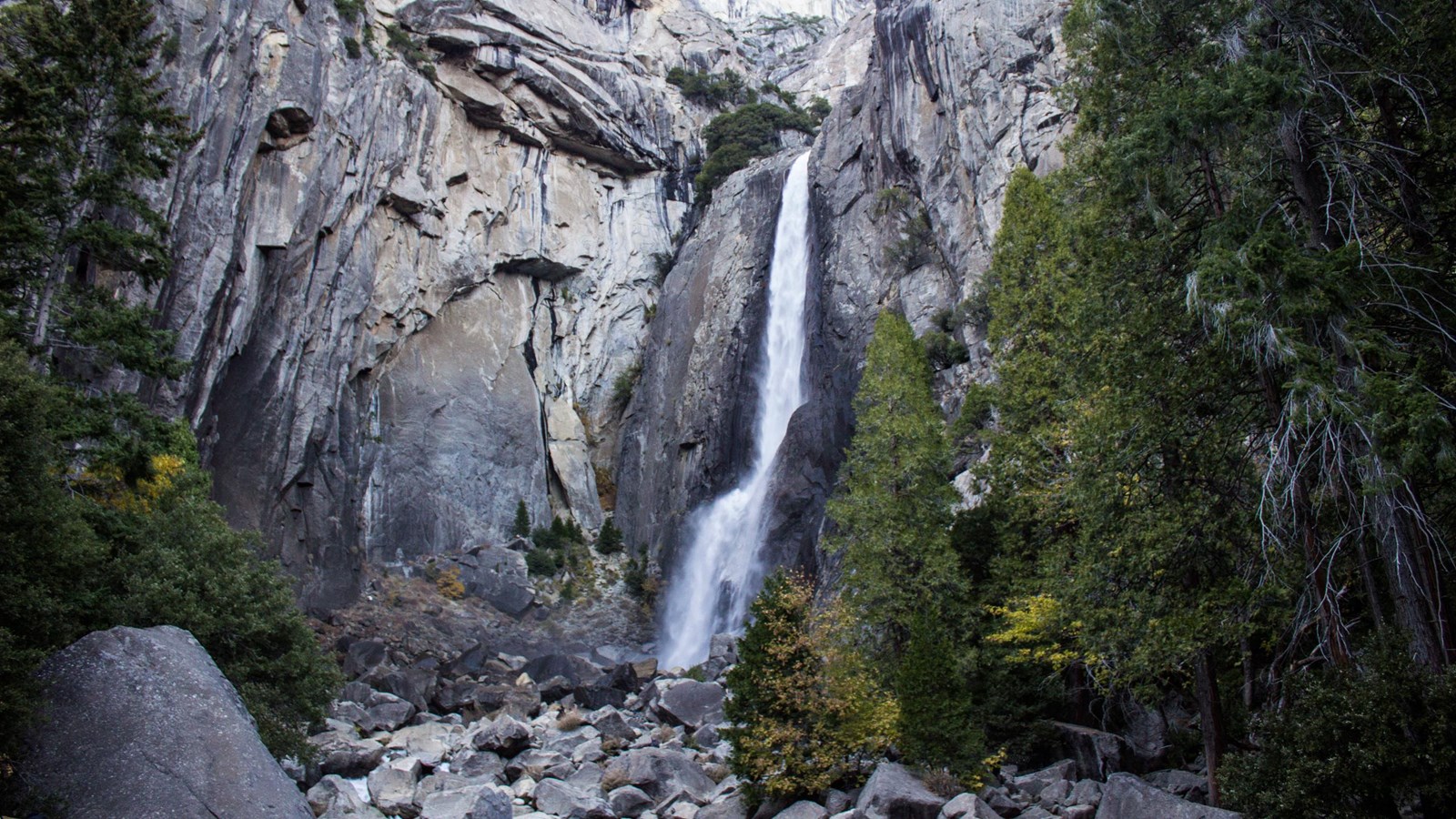Last updated: September 1, 2025
Place
Lower Yosemite Fall Viewing Area

NPS Photo / C. Jacoby
Scenic View/Photo Spot, Wheelchair Accessible
Yosemite Falls is made of the upper fall, middle cascades, and lower fall, all dropping a total of 2,425 ft. (740 m), and is one of the tallest waterfalls in North America. Take in a view of Lower Yosemite Fall from this iconic viewing area. In spring, when flow is strongest, expect mist and wind at this viewing area as the powerful waterfall cascades down the cliffs in front of you.
From this viewpoint at the base of the waterfall, the upper fall and middle cascades of Yosemite Falls are not visible. To get a view of the full height of the waterfall, walk the nearby Cook's Meadow loop or walk to the viewpoint on the west side of the Lower Yosemite Fall loop.
Caution: stay on the paved trail. Above the wooden footbridge that crosses Yosemite Creek, the rocks and boulders are slippery even when dry. Venturing off-trail in this area frequently leads to serious injuries.
Tips & Seasonal Information
Leashed pets are permitted on this trail. Bicycles are prohibited on the Lower Yosemite Fall loop trail, including this viewing area. Numerous bicycle racks are located at the two trailheads (east and west side of the Lower Yosemite Fall loop).
Yosemite Creek, the source of this waterfall, is fed entirely by snow melt. At its peak in late spring, 2,400 gallons per second can flow over the lip of the upper fall. While you can visit this trail and viewing area year-round, there is often no water in the waterfall by late summer.
In winter, a cone of ice accumulates at the base of Upper Yosemite Fall, sometimes exceeding 300 feet tall. The ice cone is usually melted by mid-April. In early spring, frazil ice sometimes forms in waterfalls and creeks when waterfall mist becomes very cool.
When waterfall flow is especially high, generally in April and May, the full moon refracting light on the waterfall mist can create a phenomenon called a moonbow. The visibility of the moonbow is highly dependent on water flow, clear skies, and angle of the moon.
Accessibility
The entire Lower Yosemite Fall loop trail is paved. The eastern part of the loop (0.6 mile one-way from the Yosemite Falls shuttle stop to the viewing area) is accessible to wheelchairs and crosses several braided streams before reaching the Lower Yosemite Fall viewing area, which has transferable seating to granite boulders at wheelchair height.
The western part of the loop (0.5 mile one-way to the viewing area) is wide enough for several people and is mostly accessible; however, a short, steep grade near the viewing area (the last 180 feet include a slope of 13.8%) may make assistance necessary for some visitors.
An accessible restroom is located near the trailhead, on the western end of the loop across the street from Yosemite Valley Lodge. The restroom facility has a designated family restroom that is also accessible.
